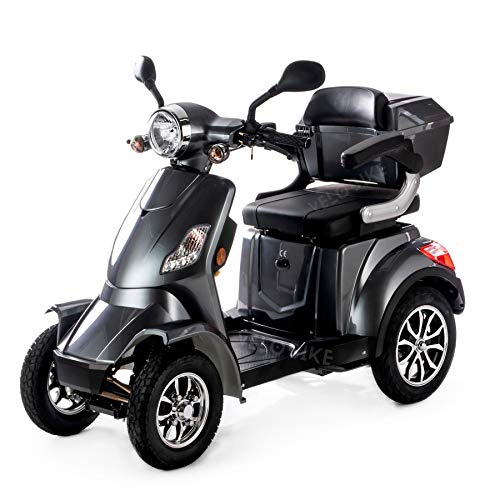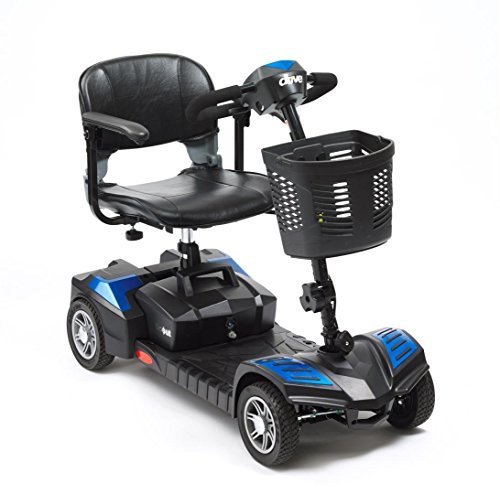 Mobility Scooter For People With Limited Mobility
Mobility Scooter For People With Limited MobilityYou can use a mobility scooter if have problems getting around. You can pick from a variety of different sizes and speeds, based on how you plan to use it.
 Some insurance policies, like Medicare and Medicaid will cover the cost for mobility scooters. These coverages may also be available to those who are receiving the social security supplemental payment.
Some insurance policies, like Medicare and Medicaid will cover the cost for mobility scooters. These coverages may also be available to those who are receiving the social security supplemental payment.Mobility Scooters
Mobility scooters are an excellent option for elderly people and those with mobility issues. It gives them the freedom to travel places they would not have before. Mobility scooters are also made with comfort and efficiency in mind. They are constructed with top-quality components and materials to offer the best experience for users.
The most reliable Mobility scooter usa scooters are easy to maneuver, even on rough surfaces. The top mobility scooters come with a an upholstered, swivel-seat that is cushioned and adjustable backrest. They can be easily disassembled into manageable pieces for transport. They have long battery lives and the controls are intuitive. They also have a low weight, and a majority of them have a freewheel mode.
The majority of mobility scooters are covered by Medicare or Medicaid, depending on the user's situation. Medicare covers mobility scooters as durable medical devices, but you need a doctor's recommendation and prescription. Medicaid coverage varies from state to state. You can call the Medicare card number to learn more about the coverage options available to you.
If you are planning to transport a scooter in an automobile or van, you might need a vehicle ramp or lift. The weight of the heaviest product is usually stated on the spec sheet so you can check it against the load capacity of your vehicle. A lot of mobility scooters designed for travel be split into different components and fold up to make them easier to carry in your car. These models are also more mobile and are generally cheaper than other types of scooters. Some models include a carry bag for convenience. Some also feature LED lights on the deck and front to ensure safety, as well as an electric horn.
Medicare
A mobility scooter is a great option for people who require assistance to get around, but don't need the most advanced features or faster speeds of an electric chair. It's also a great option for those who have limitations in mobility of the arm or shoulder and is much easier to maneuver than the majority of manual wheelchairs. It is important to be aware that Medicare will not cover these types of devices. You will have to pay out of pocket unless you have a different insurance plan.
There are numerous scooter models available. However they all function in the same way. The essential components of a scooter comprise a steering tiller, a battery, motor, and wheels. The steering tiller controls the direction of travel and the motor and wheel are used to move forward and backward. The battery powers the scooter and some batteries also provide lighting to improve visibility.
As compared to wheelchairs, scooters are usually cheaper and have more customizable features. They are also easier to maneuver on uneven pavements than wheelchairs and can be used in areas that wheelchairs cannot. They are also considered less stigmatizing for people who are able-bodied and many users find them to be more comfortable to travel long distances in.
Depending on your state depending on your state, you are able to operate scooters on sidewalks or other pedestrian areas provided you have the proper safety gear. It is crucial to stay aware of your surroundings and to not block pedestrian traffic. It is also recommended to use reflective materials and wear helmets to ensure your safety. You should also never ride your scooter on the road unless specifically permitted to do this.
Medicaid
A mobility scooter is an electric vehicle that has a seat over two rear wheels and an area that is flat for feet. It also has a handlebar in the front that can be used to turn one or two wheels that can be steered. Certain models can be driven on sidewalks, while others are capable of traveling over roads or other paths. Mobility scooters are an excellent alternative for those who struggle to walk longer distances but still want to stay active. They are also cheaper than power wheelchairs. It is important to keep in mind that a scooter might not be the best option for all. Some seniors are able to walk on their own, and in this situation it is recommended to use walking aids, or a non-motorized device.
Medicare does not cover the cost of scooters. However you may apply to Medicaid to receive the money. You must be unable safely to walk more than 200 feet, and you must have medical conditions that require a scooter to be eligible. You must also meet income requirements as well as other rules of the program.
Depending on where you live there may be a variety of laws governing the use of mobility scooters. For instance, in North Dakota, scooters are classified as personal assistive electric mobility devices, which means that they are not considered vehicles and do not need to be registered or insured. However, you must comply with all general traffic laws when operating a scooter on public roads. You must follow all traffic signals and use crosswalks if there are. Also, you must adhere to the speed limit within a reasonable range in order to ensure the safety and well-being of pedestrians as well as other scooter users.
Insurance
Many people who have mobility issues are not covered by their insurance. However those who are covered could receive assistance to pay for an electric scooter. In addition to Medicare and Medicaid, some private insurance plans will cover a scooter. The eligibility requirements for these kinds of insurance plans can differ by state. For instance, certain veterans who qualify for Tricare will have some of the cost of a scooter paid for.
A majority of states have laws that permit individuals to ride scooters legally on sidewalks as well as other pedestrian paths. In addition, some states require that users adhere to traffic rules and use signals when turning or stopping. It is recommended that scooter users wear helmets and attend safety courses to ensure their safety and the safety others around them.
In certain instances scooters are permitted in roads with speed limits of up to 25 mph. It is important to keep in mind that a scooter should be operated on a road with a valid operator's license and insurance. Furthermore, the vehicle should be equipped with functioning headlights, taillights and horns to ensure the safety of other drivers as well as pedestrians.
Some individuals might be eligible for Medicare coverage if they have their doctor provide a prescription and a letter which states that the scooter is medically necessary. They may then be eligible for Medicare Part B which covers 80% the cost of the scooter. If a person can't afford to buy a scooter for themselves, they can consider financing options or purchase one through a reseller. It is also worth considering buying an electric mobility scooter that comes with warranty. It will cover the cost of repairs and replacements parts if something goes wrong.
Financing
A mobility scooter purchase can be expensive, but there are financing options to make it more affordable. These financing options can be found through third-party lenders as well as medical equipment retailers and even dealerships. It is essential to know the various financing options and how they work prior to applying. This way, you will find the best option for your requirements.
One of the most well-known financing options for mobility scooters is through non-profit organizations. They offer loans with low interest which make the purchase more affordable for people who have limited funds. Another option is personal loans from a credit union. These loans require a credit assessment and have lower interest rates compared to mobility scooter financing.
It is crucial to consider the individual needs and preferences of the user when choosing a 3-wheel mobility scooters device. For example, the amount of time someone will spend on the scooter will influence the model they select. Furthermore, the scooter's weight capacity as well as battery size will also play a role in its usability.
In some cases, medical insurance or Medicare may cover the cost of a mobility scooter. However, this isn't always enough to cover the full cost of the device. Many buyers seek assistance from third-party finance companies or dealers.
In addition to offering various financing options, these companies are able to assist customers in the difficult process of choosing the appropriate scooter for their needs. They can also assist customers determine if they are eligible for government-funded assistance programs. These programs can help users make informed choices and avoid paying excessively for their scooters. They can also provide advice on other forms of financial support and assistance such as reverse mortgages or private equity loans.
